How to Use LinkedIn as a Research Tool
LinkedIn is a powerful tool for building your personal brand and finding exciting jobs to advance your career. And beyond both of those, the platform is an excellent base for doing research.
Whether you’re looking for article interviewees, doing work for a client, or gathering insights, there are a number of ways to use the platform for research. Here’s how you can use LinkedIn to maximize your research efforts.
Creating Polls
Polls have long been a way to gather helpful information and feedback from others. On LinkedIn, you can create your own and set them to run for up to two weeks.
Polls help gather research for university projects and articles. You can also use this option to gain first-hand feedback on a product or service.
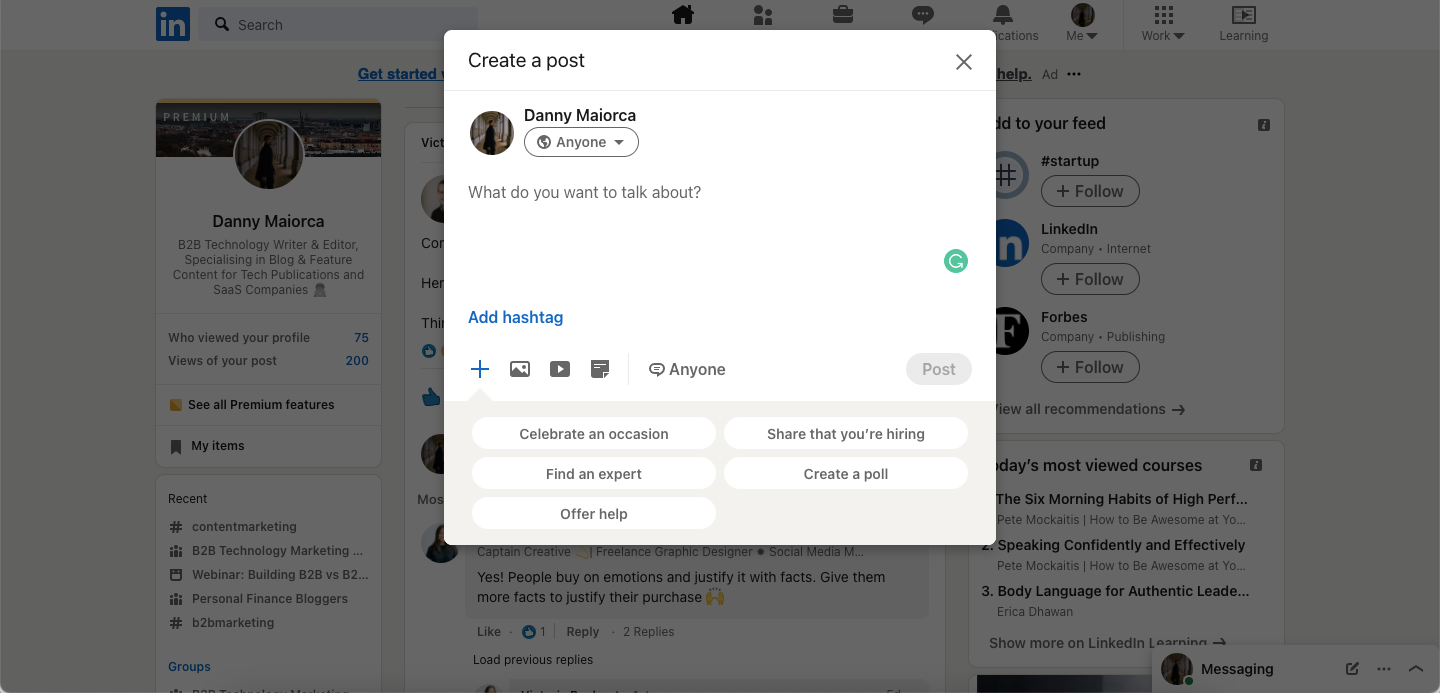
To create a poll:
- Click on Start a Post on the homepage.
- In the list of options in the grey box, choose Create a Poll.
- Set your questions, how long you want it to run for, and so on.
- Select Done when you’re ready to post.
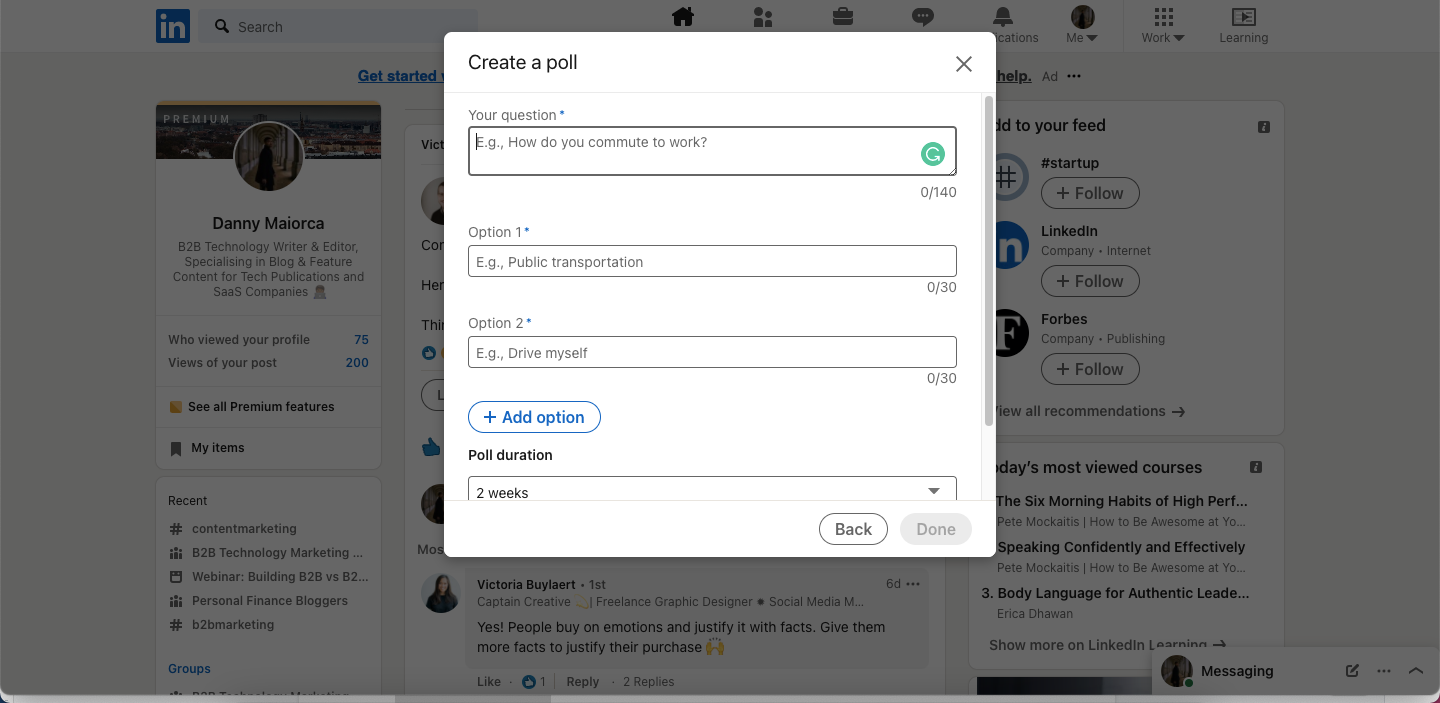
Joining Groups
Many people view LinkedIn as Facebook for professionals. And considering the importance of groups in Facebook’s ecosystem, it’s perhaps unsurprising to see that they are also prominent on LinkedIn.
On LinkedIn, you’ll find groups related to various industries and interests. Once you’re a member of one, you can also use keywords to sift through the content posted there.
Using LinkedIn groups is a handy research tool in various scenarios. These include researching trends in your industry, looking for people to participate in a report, and networking with other professionals.

To join a LinkedIn group:
- In the search bar, type the keywords related to what you’re looking for.
- Tap the Groups tab.
- Click on the group you want to join.
- Choose Request to Join and wait for the moderators’ approval.
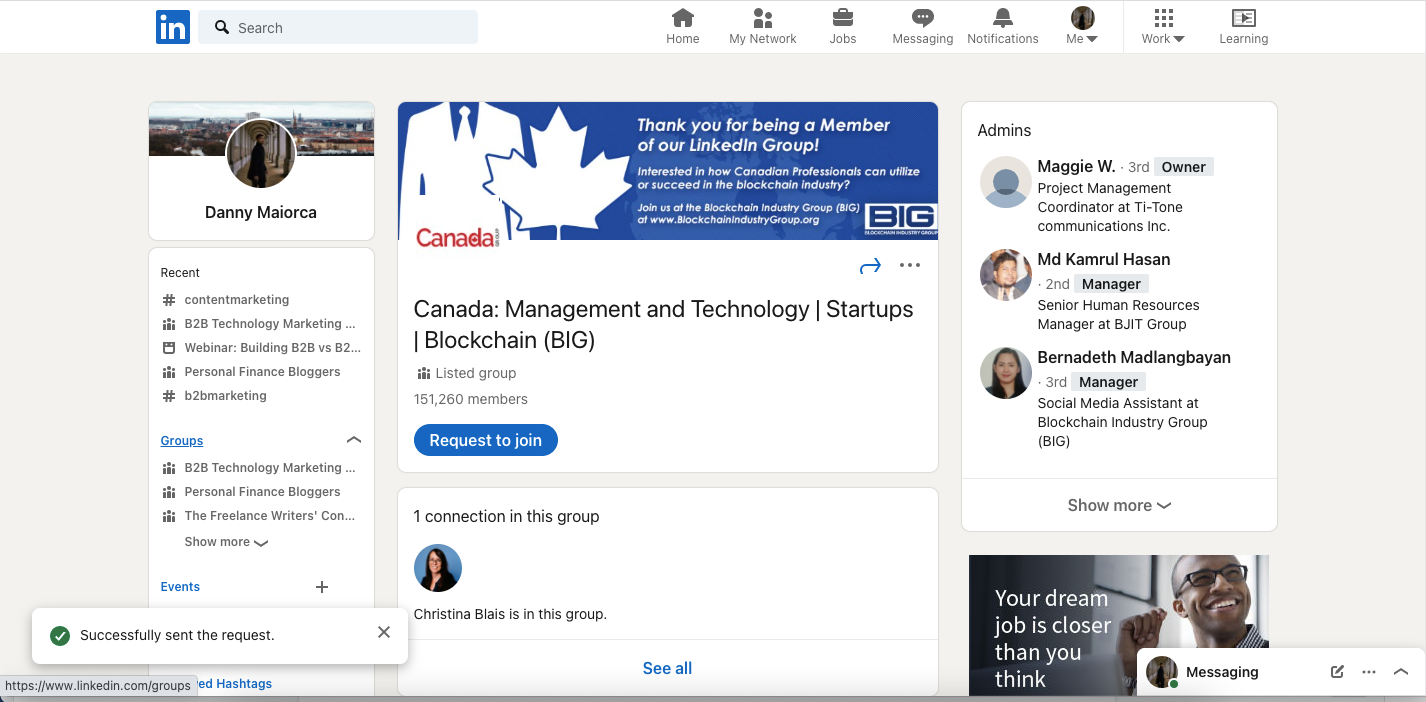
Following Hashtags
Hashtags are popular on LinkedIn and excellent for narrowing down content that meets your interests. You can use this function for various research methods, such as:
- Gathering public thoughts on a trending topic.
- Finding content from experts when learning a new skill.
- Gaining information about a company or client you want to work with.
- Keeping up-to-date with industry news.
You can access LinkedIn hashtags in a variety of ways. If you see a post in your feed, you can click on the blue hashtagged word, and the platform will redirect you.
Otherwise, you can type the hashtag into your search bar.
You can also follow hashtags for topics you’d like to keep a close eye on. To do this:
- Click on the hashtag you want to follow.
- At the top of the page will be a blue Follow button. Tap this.
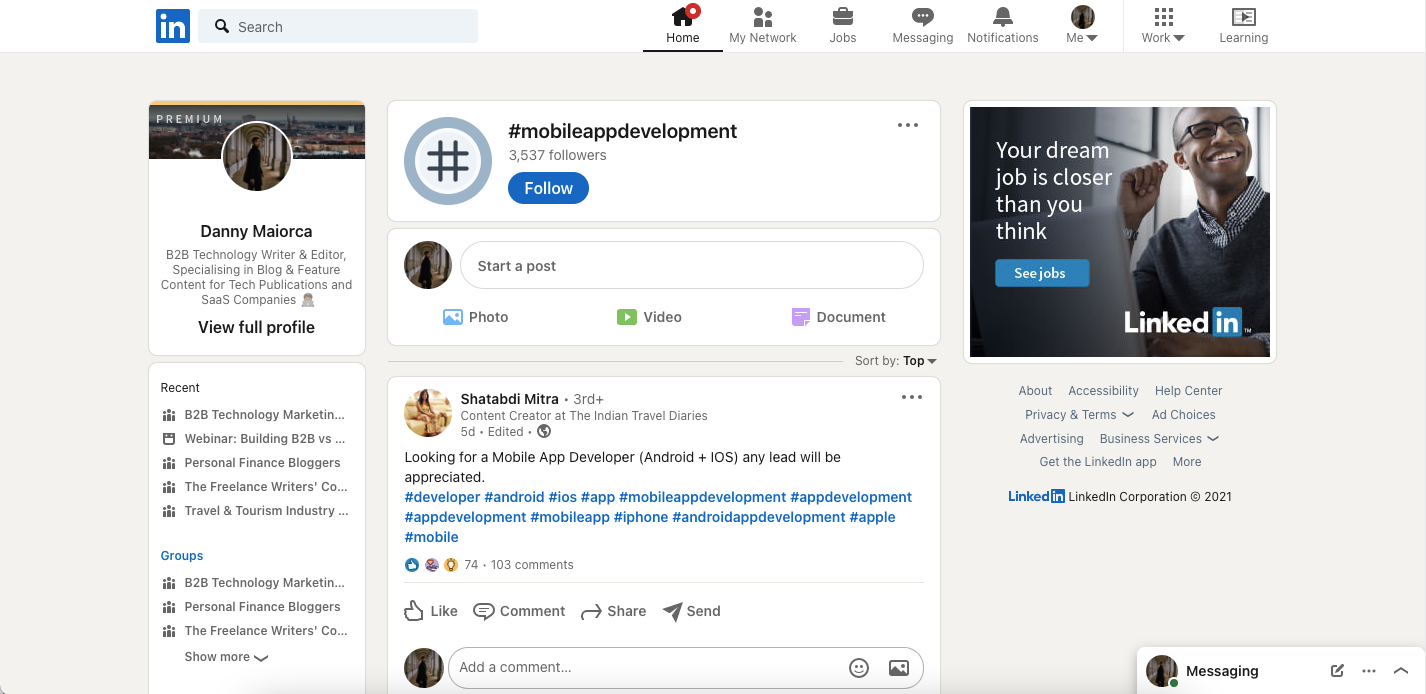
Discovering Events
Beyond consuming content and networking, LinkedIn is also a great place to discover events you might be interested in attending.
Like with groups and hashtags, you’ll find events related to various industries. You’ll also get to see whether or not they’re virtual.
Reasons you might want to attend events on LinkedIn include learning more about a new product or service, gaining insights from industry professionals, and gathering more research for a project.
To find events on LinkedIn:
- Type in the keywords for the events you want to find in the search bar.
- Click on the Events tab.
- Scroll through until you find the ones you want to attend.
- Sign up for them via the registration link.
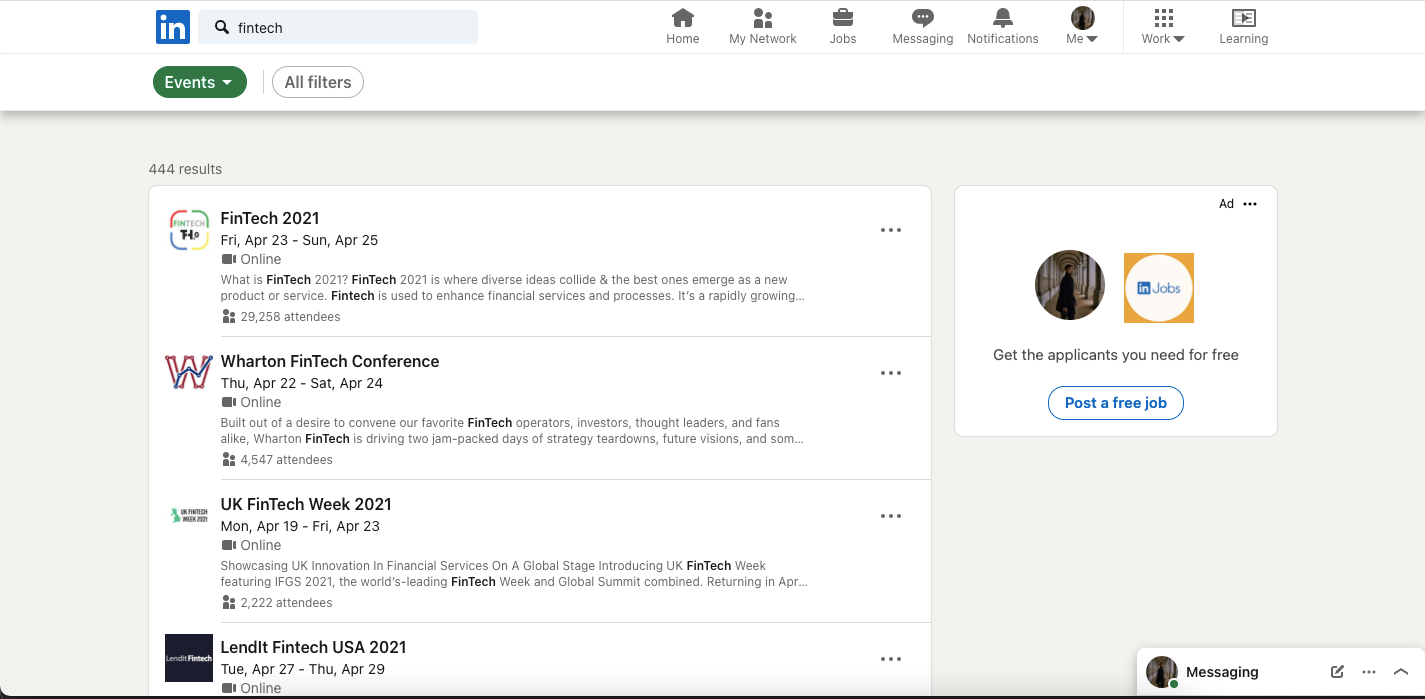
It’s worth remembering that even if you can’t attend live, you may be able to access a recording of the event. So, signing up is still a good idea in these cases.
Using InMail
Usually, you can only send messages to people within your LinkedIn network. This is great if you don’t want to receive sales pitches from a stranger. But when you need to reach out to someone you’re not connected with, it’s a little frustrating.
Fortunately, there’s a solution. InMail allows you to send messages to other users on LinkedIn without having to connect beforehand.
Sending InMail is useful when looking to interview someone for an article or discovering more information about a job opening.
To use InMail, you need a Premium membership. LinkedIn has numerous fee structures for this, ranging from $29.99 to $119.95 per month.
The number of monthly InMail credits you get depends on your membership level. For the standard Career membership, you get five per month.
Researching Company Information
LinkedIn can also help you do certain research on companies. The platform can offer you an overview of average turnover, median tenure, and employee distribution.
To gain insights into a company, follow the steps below:
- Sign in to LinkedIn.
- Go to the page of the company you want to research.
- Click on the Insights tab.
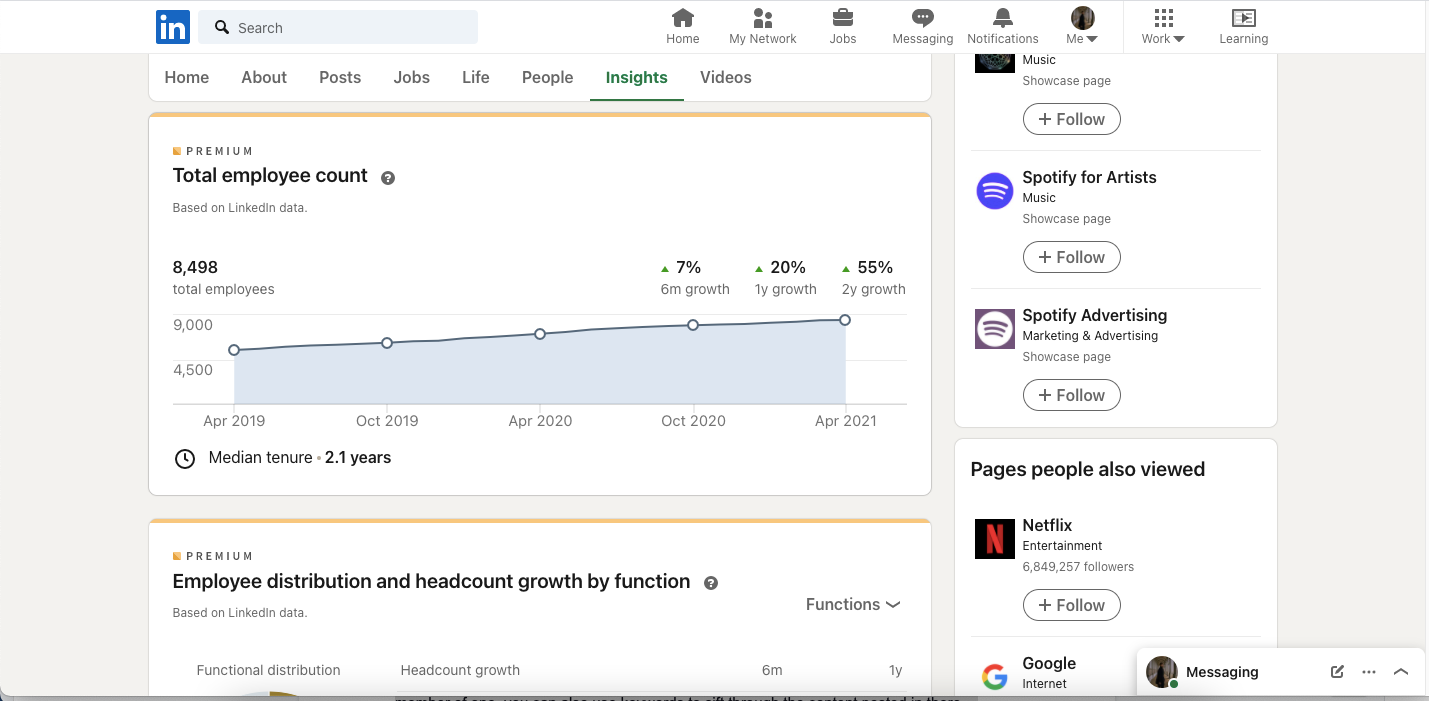
If you want to break down employee distribution based on roles not listed, you can do the following:
- Click on the Functions dropdown menu.
- Select all of the different parts and departments you want to appear in the pie chart.
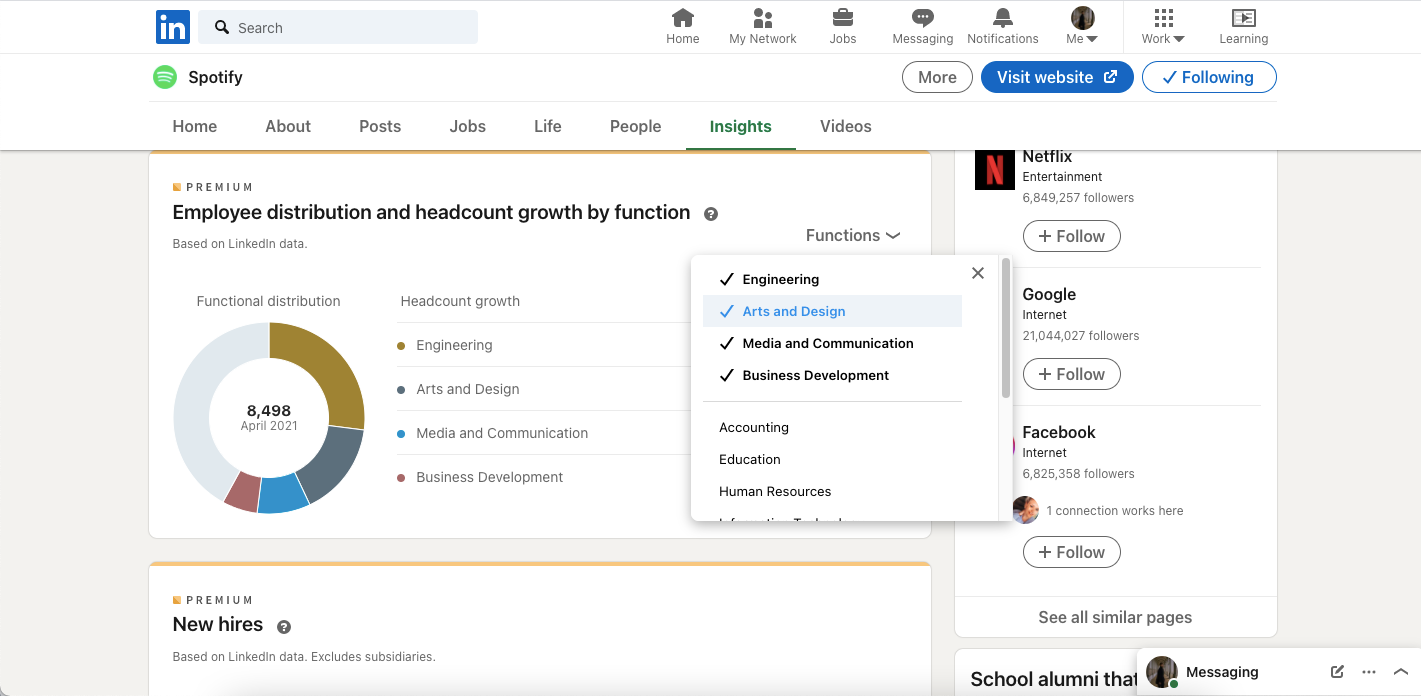
Like InMail, you’ll need a Premium membership to access company insights.
How to Keep Everything in One Place
LinkedIn is great for so many research purposes. Because of that, losing track of everything is easy.
Luckily, the platform has developed a solution to this problem. With the Discover Hub, you can keep track of the pages you follow, groups you’re in, newsletters you’re signed up to, and more.
To access your Discover Hub:
- Go to your homepage on LinkedIn.
- Scroll down to the bottom of the box on the left-hand tab.
- Tap on Discover More.
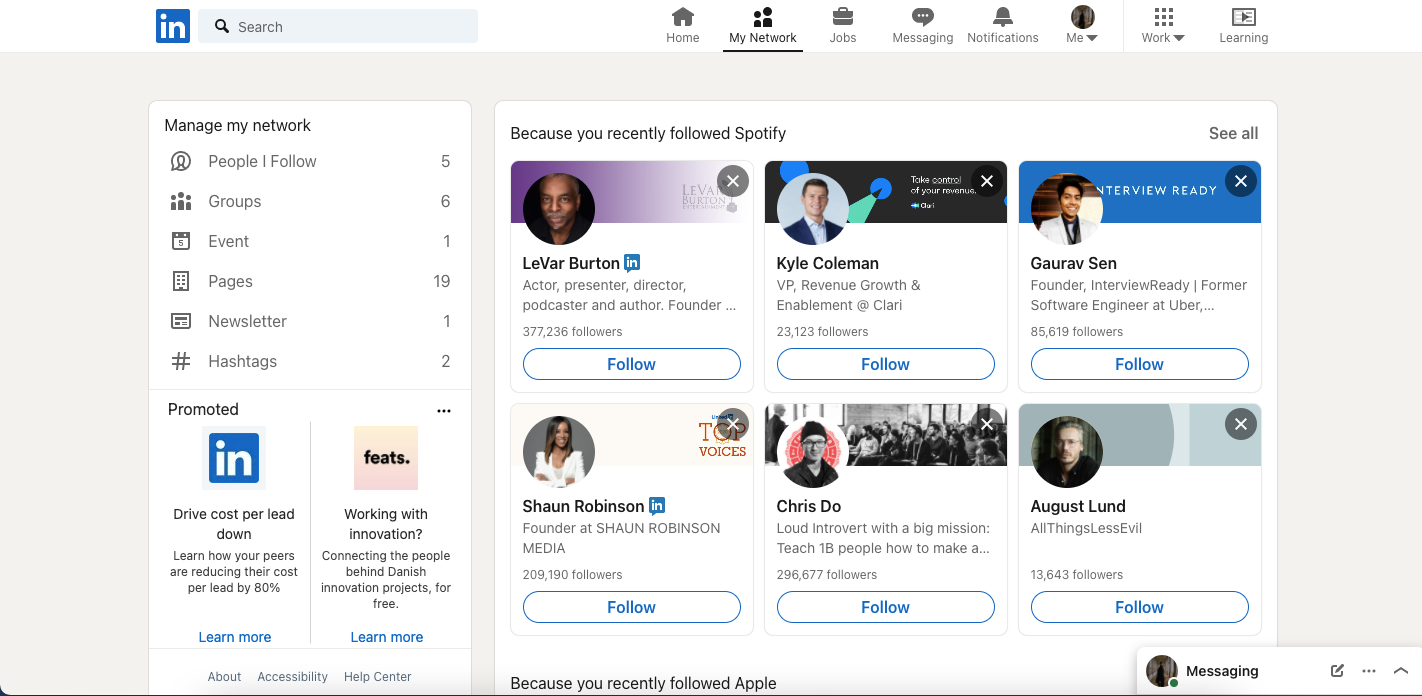
Up Your Research With LinkedIn
If you’ve only ever looked at LinkedIn as a place to update your resume and connect with colleagues, it’s time to rethink that. As a research tool, the platform offers options for a broad range of needs.
Once you’re done with the Google search, try doing your own primary research on LinkedIn. You’ll gain better insights into companies, industries, and individuals.
If you want to further up your research game, investing in LinkedIn Premium is also a wise decision.
source https://www.makeuseof.com/how-to-use-linkedin-as-a-research-tool/
Post a Comment for "How to Use LinkedIn as a Research Tool"
Comment when there are difficulties